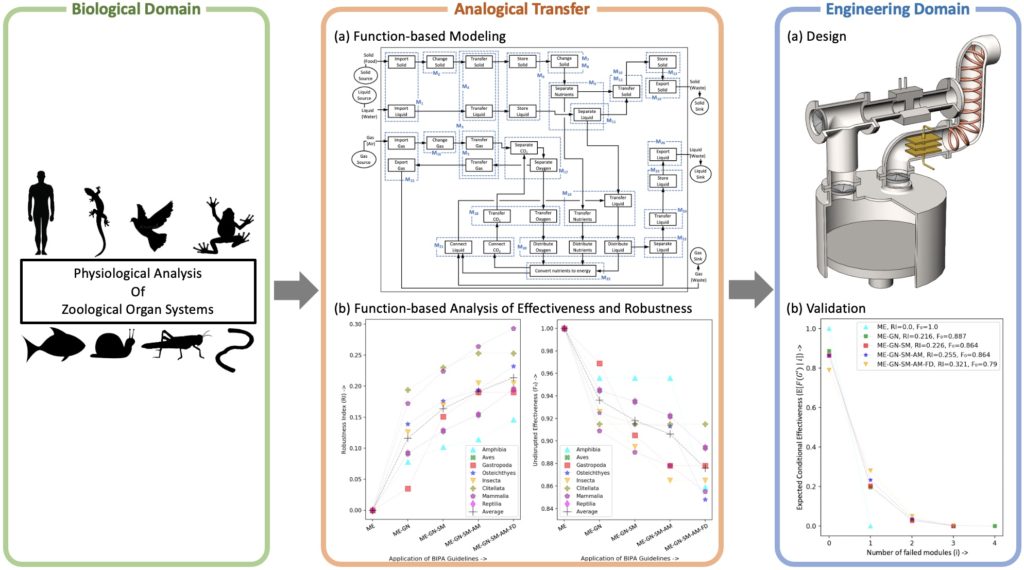Devesh Bhasin, David Staack, Daniel A. McAdams
J. Mech. Des. Aug 2022, 144(8): 081402
https://doi.org/10.1115/1.4054246
It is often desirable for engineered systems to sustain their functional effectiveness in the event of unforeseen disruptions. In analogy, biological systems are often physiologically adapted to survive both internal and environmental disruptions. This work shows that implementing bioinspired development and arrangement of modules in an engineered system may improve the system’s robustness to random module disruptions. However, this improvement in system robustness is also found to be associated with a degradation in the system’s effectiveness in the absence of any module disruption. Such a trade-off is identified by introducing new function-based metrics to quantify system effectiveness and robustness in the early design stages. The introduced metrics are then utilized to compare zoological systems to functionally-equivalent modular systems. The findings are validated by designing and computationally analyzing a bioinspired COVID-19 breathalyzer.



